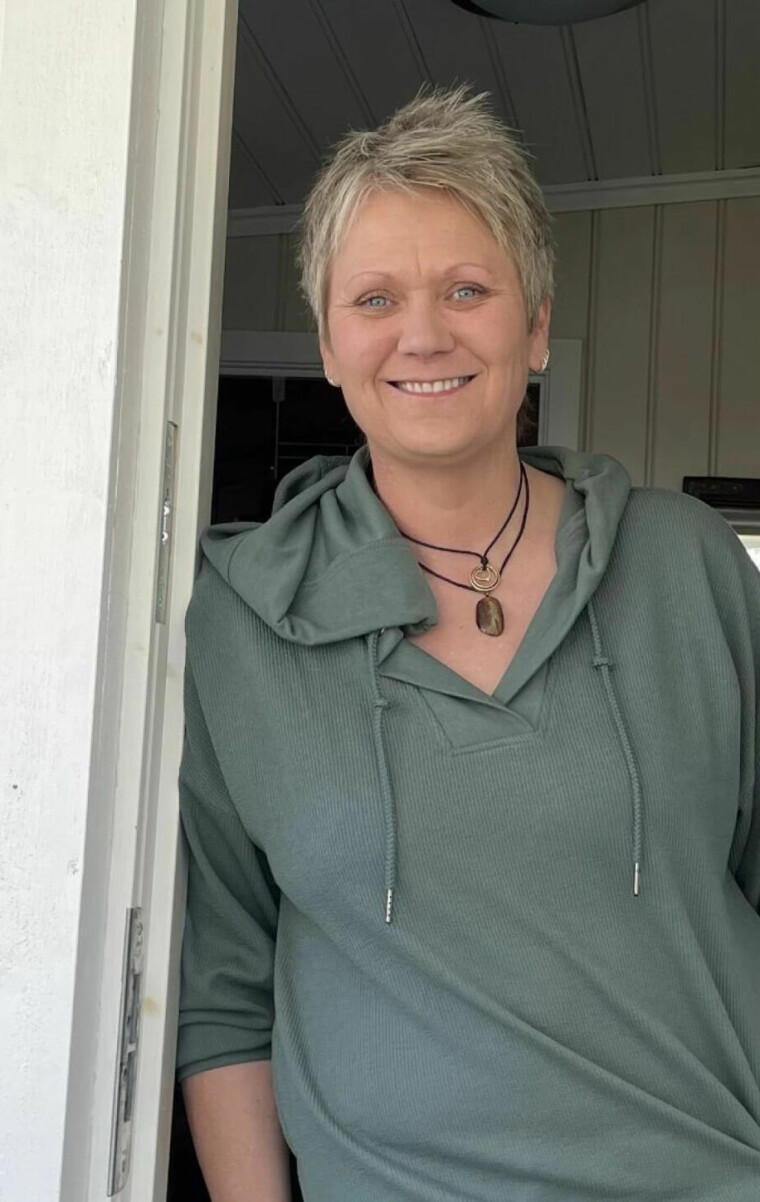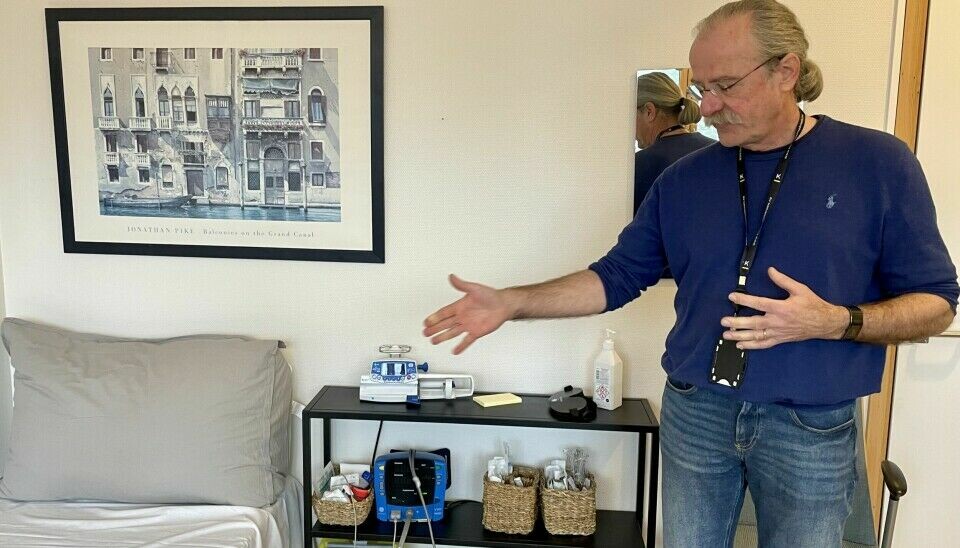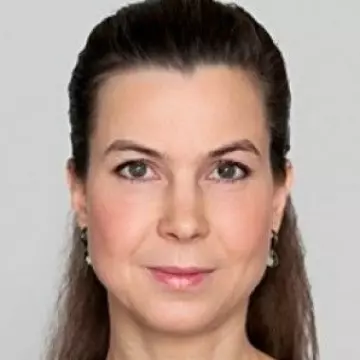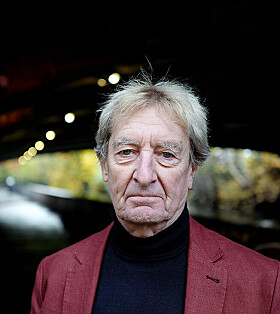
Cleary had tried everything.
Hours of talk therapy.
Loads of different types of antidepressants.
Two rounds of electroshock therapy.
In 2021, she received treatment with the drug ketamine.
"Without ketamine, I probably wouldn't be here today"
Cleary Ødegård has struggled with severe depression and suicidal thoughts since she was 12 years old. Now she is 48 and has for the first time received treatment that helps.
“I felt that I’d been left to fend for myself before I was offered this treatment. The therapists had told me that they didn’t have any more options to offer. I stood there with no hope of help, no hope of recovery.”
The 48-year-old began making plans for how she was going to end it all.
“I have a wife that I love and people around me that I love, but I felt that I was only hurting them by being here.”
Had read about ketamine
Cleary had kept the suicidal thoughts to herself. But now she told her wife Bente, whom she has been married to since she was 27, about these thoughts.
Cleary’s spouse then began desperately looking for a solution. She had read somewhere that some people with severe depression and suicidal thoughts could be treated with a drug called ketamine.
When Ødegård brought this up with her therapist, she just smiled and asked: "So you've read something, have you?" Then nothing more happened.
After a few weeks, Ødegård timidly asked to be referred to Østfold Hospital. She knew they had started this treatment.
A couple of weeks later, she was called in.
Open to new things
The team of department head Ingmar Clausen received Ødegård at Østfold Hospital. When sciencenorway.no meets Clausen, the psychiatric specialist describes himself as the type of doctor who is open to new ideas.
Clausen has worked as an emergency doctor in Germany, and it was there that he heard about ketamine. Doctors carried it in their emergency bags.
When Clausen learned about the use of ketamine to treat depression, he threw himself into investigating the research literature.
“The most important thing for me as a doctor is to not harm my patients. So the first thing I looked at were the possible harmful effects,” he says.
He learned that no harmful effects of this psychedelic have been recorded in the doses that have been used in the treatment of mental disorders. Every single day, ketamine is used during surgery in Norwegian hospitals, where the doses are ten times as high as those currently used to treat mental disorders.
He also learned from the research literature that the potential for addiction is very low under controlled conditions.
A challenging process
However, convincing colleagues that Østfold Hospital should take the lead in Norway in allowing patients with severe depression to try treatment with ketamine was still a difficult process, says Clausen.
“‘This is something we just don't do,’ was the only counterargument I got,” he says.
The drug, in addition to being an anaesthetic for use in operations, is also a psychedelic substance. Ketamine is used by some people as a party drug.
After many discussions, Østfold Hospital became the first public hospital in Norway to offer ketamine treatment in 2020.
The first patients were recruited from the hospital's own emergency department. The hospital then began treating patients who were in acute danger of taking their own lives and who had tried all other treatments for depression.
Wanted to end her life
Cleary Ødegård was one of them.
“I had a tough childhood. When I was 12 years old, I lost my brother. Then things started happening to me. The first depression appeared. So did the suicidal thoughts. The grip of all this tightened during my teenage years,” she said.
Her depression had taken hold. In her early 20s, Ødegård was admitted to a psychiatric hospital for the first time. Since then she has had recurring depressions and many hospitalizations.
Despite the many difficult periods, Ødegård has never been particularly fond of drugs, she says.
“It could have something to do with my upbringing. I almost never drink alcohol. Maybe a beer on a Saturday, rarely anything more.”
That's why she found the idea of taking a drug that could induce an altered state of consciousness quite scary, she says.
Leading the research on ketamine
Clausen shows us the room in the hospital where the ketamine treatment happens. The sickest patients with depression are admitted here.
The patient can choose between a good bed or a stressless recliner. Calm music. The nurses take the time to talk to you before and after treatment. The patient is given a small dose of ketamine under close supervision.
Clausen now leads the research at Østfold Hospital, which should be able to provide more findings about the treatment’s effectiveness for patients.
Much of the documentation is already in the records of the 150 patients who have received treatment at the hospital so far.
In some patients, ketamine has not been effective. But the psychiatrist believes somewhere between 50 and 70 per cent of the patients have responded positively.
However, these experiences are not enough. They have to be able to document that the treatment is effective.

Stunned by the experience
The patients who experience effects from ketamine notice the change quite quickly, often already after the first treatment, says Clausen.
“The therapists receive these patients who come in deeply depressed and withdrawn. Significant changes in mood take place even during treatment, and the patients begin to open up.”
The doctor at Østfold Hospital says that he doesn’t want to be "a hallelujah guy."
“But our therapists are deeply affected by witnessing the positive change in many of the patients. They have stars in their eyes! That’s when I think that what’s happening is a bit magical,” he says. “These are patients who’ve tried everything. This treatment is their last straw.”
“A lot of patients say that they’ve been given a new lease on life. It's moving,” says Clausen.

Cleary Ødegård finds it somewhat difficult to put into words parts of what she has experienced.
“I experience the ketamine intoxication as very powerful,” she says.
“I had a lot of visual and sensory impressions. It felt like I was in a dream. At the same time, it was more real than reality. I saw myself from the outside, like a part of everything, in a way.”
There were some great experiences, like flying through the Grand Canyon, which she has always wanted to visit.

But some things were also terrifying.
“I experienced facing death, and it was violent. I’ve danced with that so much in my life.”
Laughed for the first time in a long time
But she says she didn’t experience death as creepy.
“You might think that would have made me even less afraid of dying. But the suicidal thoughts actually pretty much disappeared right after the first treatment. After the fourth treatment, they were completely gone. And the voices that I’d had in my head for a really long time disappeared too. That might have been the strongest effect. My head became quiet after the first treatment.”
Ødegård also experienced something else, completely unexpected.
“I’m not a bubbly person. But after one of the first treatments, I discovered something funny on the side of the road.”
“Then, to my own astonishment, I suddenly laughed completely spontaneously. It had been so long since I last laughed. Then I just had to laugh even more. It was so wonderful!”
Afraid that the darkness will return
Now she can still laugh, even though laughter is not what characterizes her everyday life the most.
“After such a long period of deep depression, I’ve become very emotionally ‘flat.’ I have a hard time looking forward to things and finding the initiative to do things. Ketamine gave me the ability to want to keep living, but I didn't get a whole new life. I haven’t become a whole new person,” Ødegård says.
She still has hard days. Then she gets anxious that the darkness might return. But the dark thoughts aren’t as intrusive anymore, she says.
What Ødegård fears the most, should the darkness return, is that she might not be offered the same treatment again.
“Without ketamine, I probably wouldn't be here today. I couldn't bear to keep living the life I’d been living anymore.”
———







































